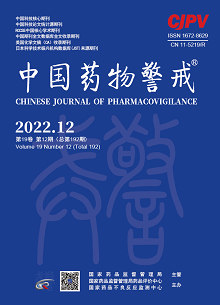|
|
Dynamic changes of polysaccharide structure during a nine-time repeat of steaming and drying of Polygoni Multiflori Radix
WANG Ying, GU Donglin, YANG Jianbo, LIU Jingjing, FAN Jing, LIU Yue, WANG Qi, JIN Hongyu, WEI Feng, MA Shuangcheng
2022, 19(12):
1285-1290.
DOI: 10.19803/j.1672-8629.20220482
Objective To study the dynamic changes of the primary structure of polysaccharides in Polygoni Multiflori Radix(PM)after nine times of steamed and sun-bathed processing. Methods The polysaccharide components of raw PM and each steamed product were obtained by water extraction and alcohol precipitation. The monosaccharide composition was determined using the PMP derivatization HPLC-PDA method, the average molecular weight(Mw)was determined with the GPC-MALLS-RID method, and the functional group structure of polysaccharide was analyzed via infrared spectroscopy. Moreover, the structural differences were analyzed. Results From raw products to processed products, the polysaccharide yield was 3.93%, 12.65%, 17.08%, 18.62%, 18.78%, 18.88%, 19.59%, 15.23%, 16.32% and 24.07%, respectively, showing an upward-downward-upward trend. The polysaccharides in raw and processed products of PM were both composed of 7 monosaccharides: mannose, rhamnose, glucuronic acid, galacturonic acid, glucose, galactose and arabinose. Despite the consistent monosaccharide composition, there were some differences in the content of monosaccharide. With the increasing number of times of steaming, the content of galacturonic acid decreased while that of glucose increased. The results of relative molecular weight measurement showed that the Mw of raw products and processed products was 515.6×103,144.9×103,325.9×103,458.5×103,256.6×103,172.8×103,281.8×103,371.2×103,304.7×103 and 257.1×103, respectively, showing a downward trend. The results of infrared spectroscopy showed that there was no significant difference in the absorption spectra of polysaccharides from raw and processed PM. Conclusion Compared with the polysaccharide in raw products of PM, the polysaccharide in processed products during the nine-time steaming and sun-drying undergoes a significant change in the monosaccharide composition and relative molecular weight, and is related to the number of times of processing. The results provide data for exploring the processing mechanism and quality control standards of PM.
References |
Related Articles |
Metrics
|

